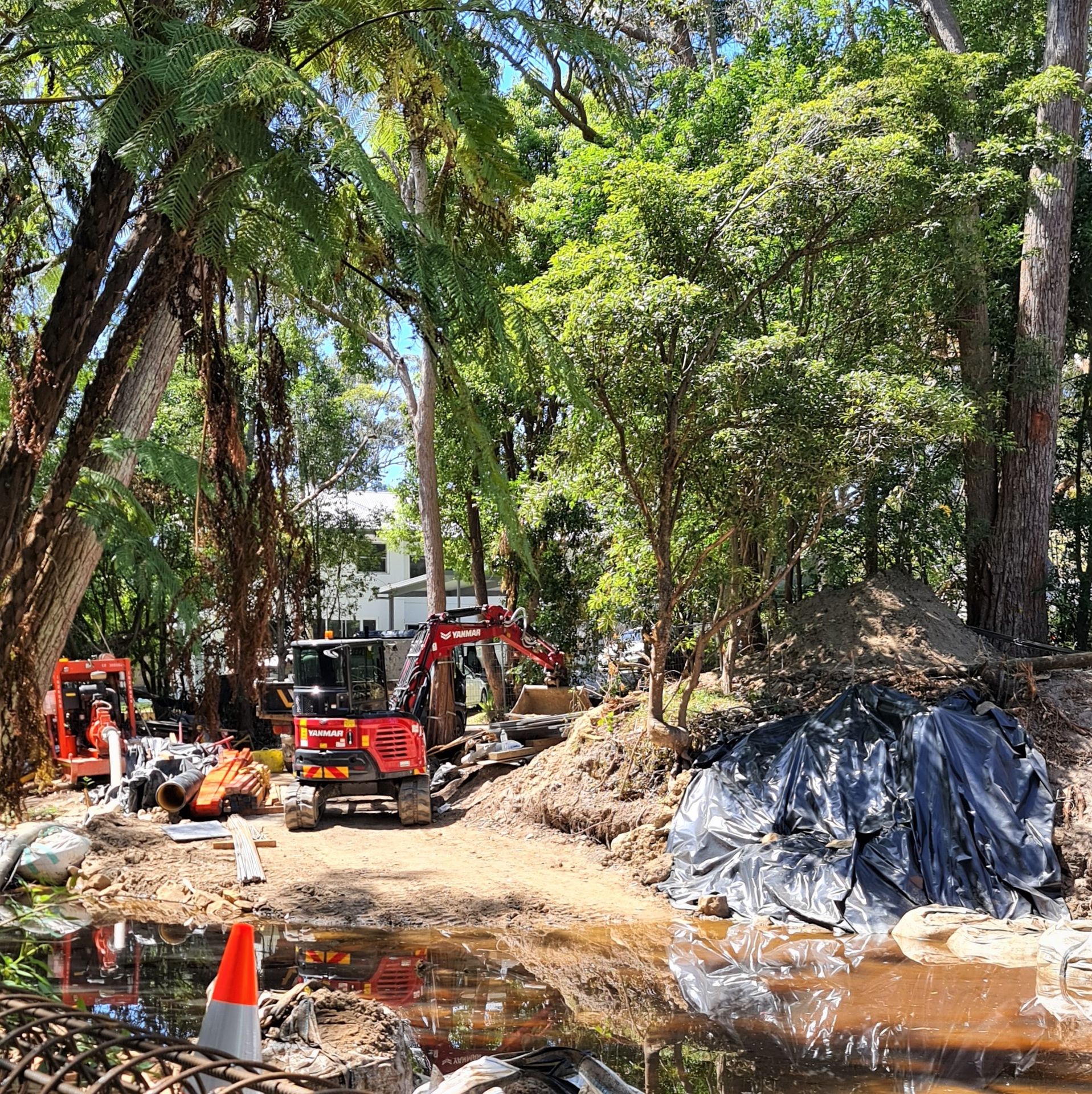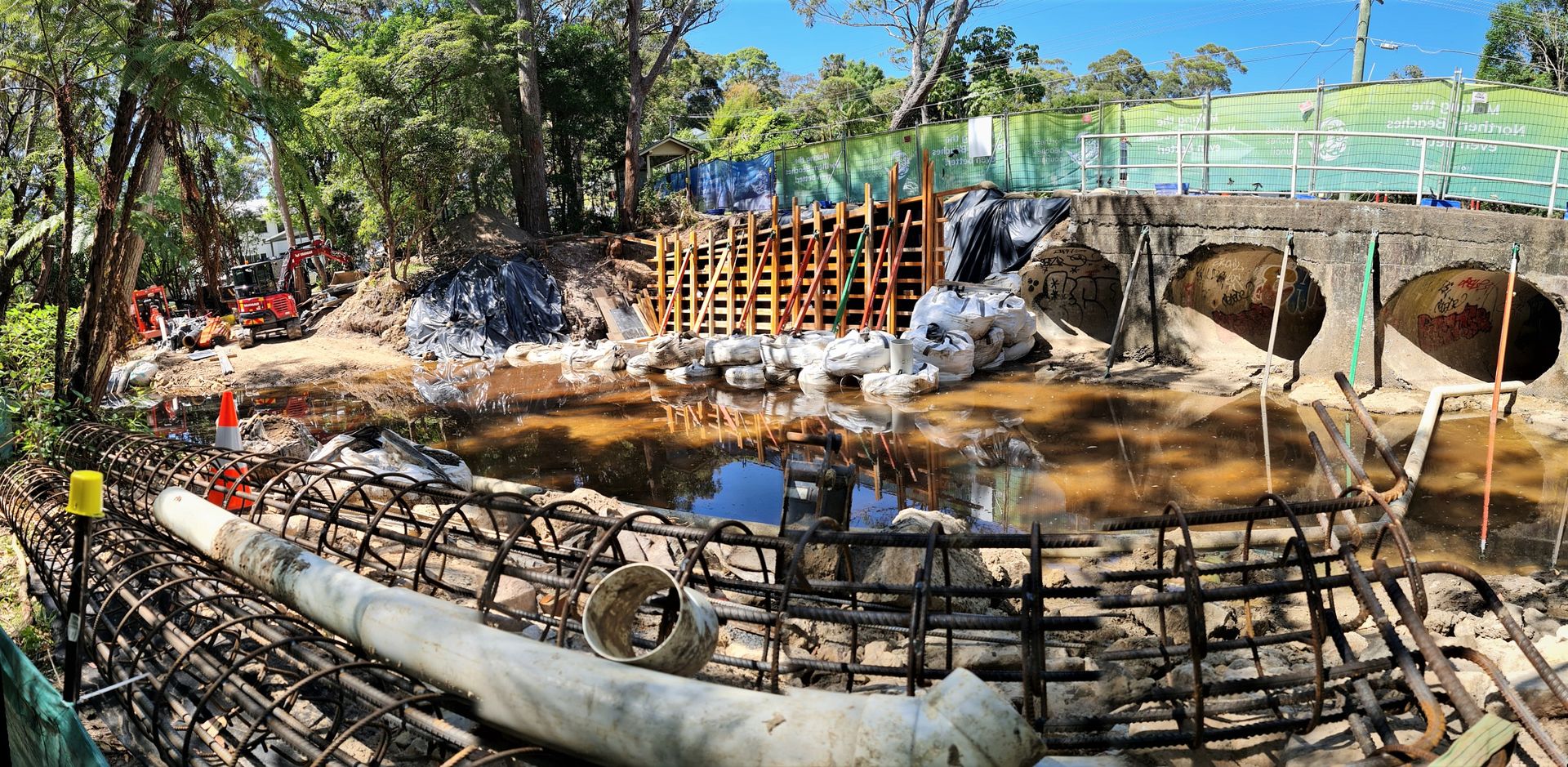synthetic turf installed in pittwater without consultation
The only jarring note is synthetic turf has been installed in the outdoor gym/fitness station area, despite not appearing once in the concept drawings that were made available for the community to comment on, or in the Plan of Management(PoM), adopted by Council at the March 2022 Meeting which also included references to recent flooding, and still do not form part of the documents to record this as now being present in this landscape. The only reference in the design and associated documents was a proposal to install an 'all-weather' BMX pump track, subsequently removed from the designs due to insufficient funds.
The park is alongside Fern Creek, Warriewood, renowned for being part of the catchment in the Warriewood Valley floodplain.
The adjacent 'Rocket Park' "Rocket Park" (actually "Warriewood Valley Playground") was a lake, following recent heavy rain in April 2024. A few pictures from then:
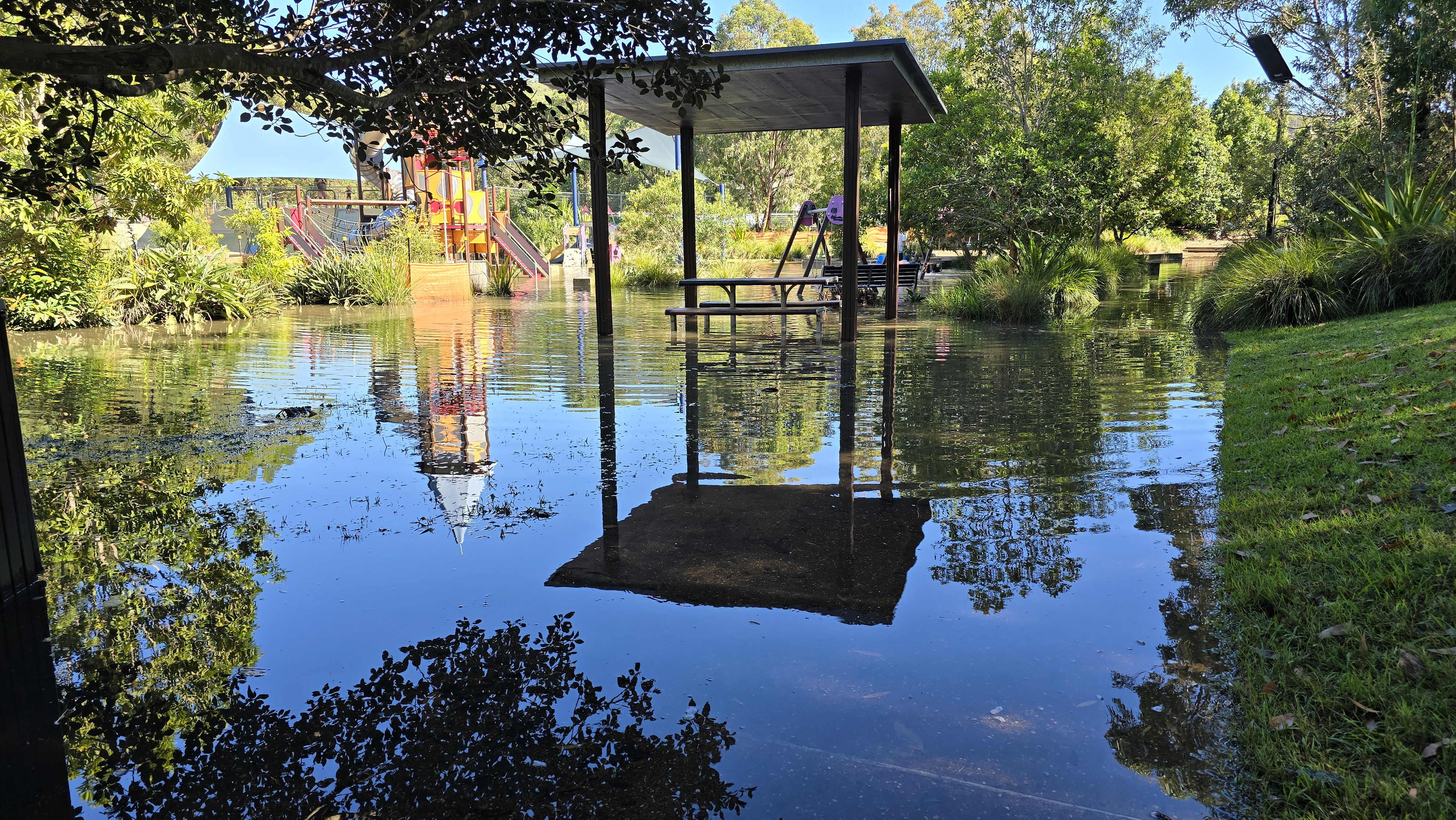
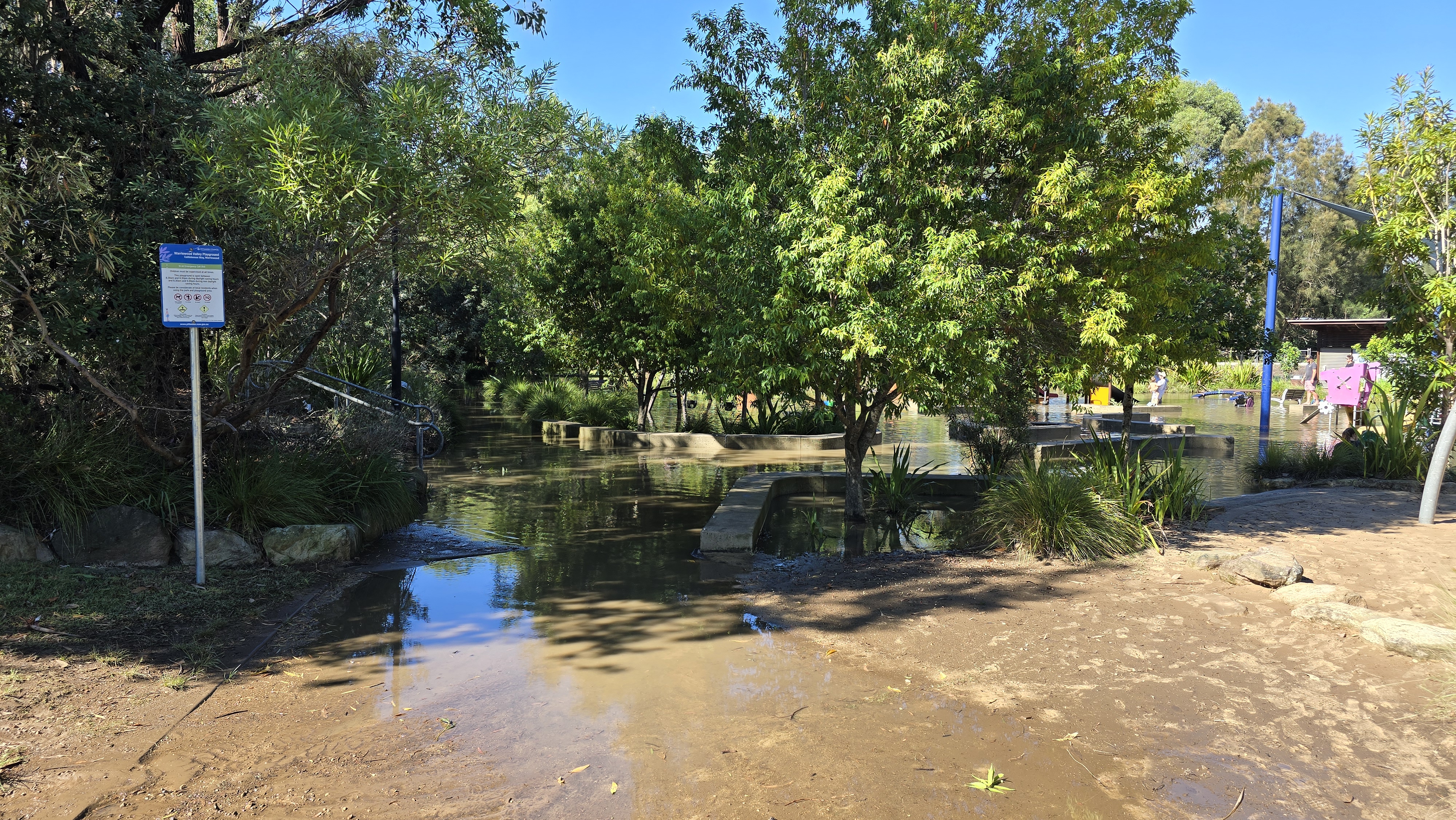
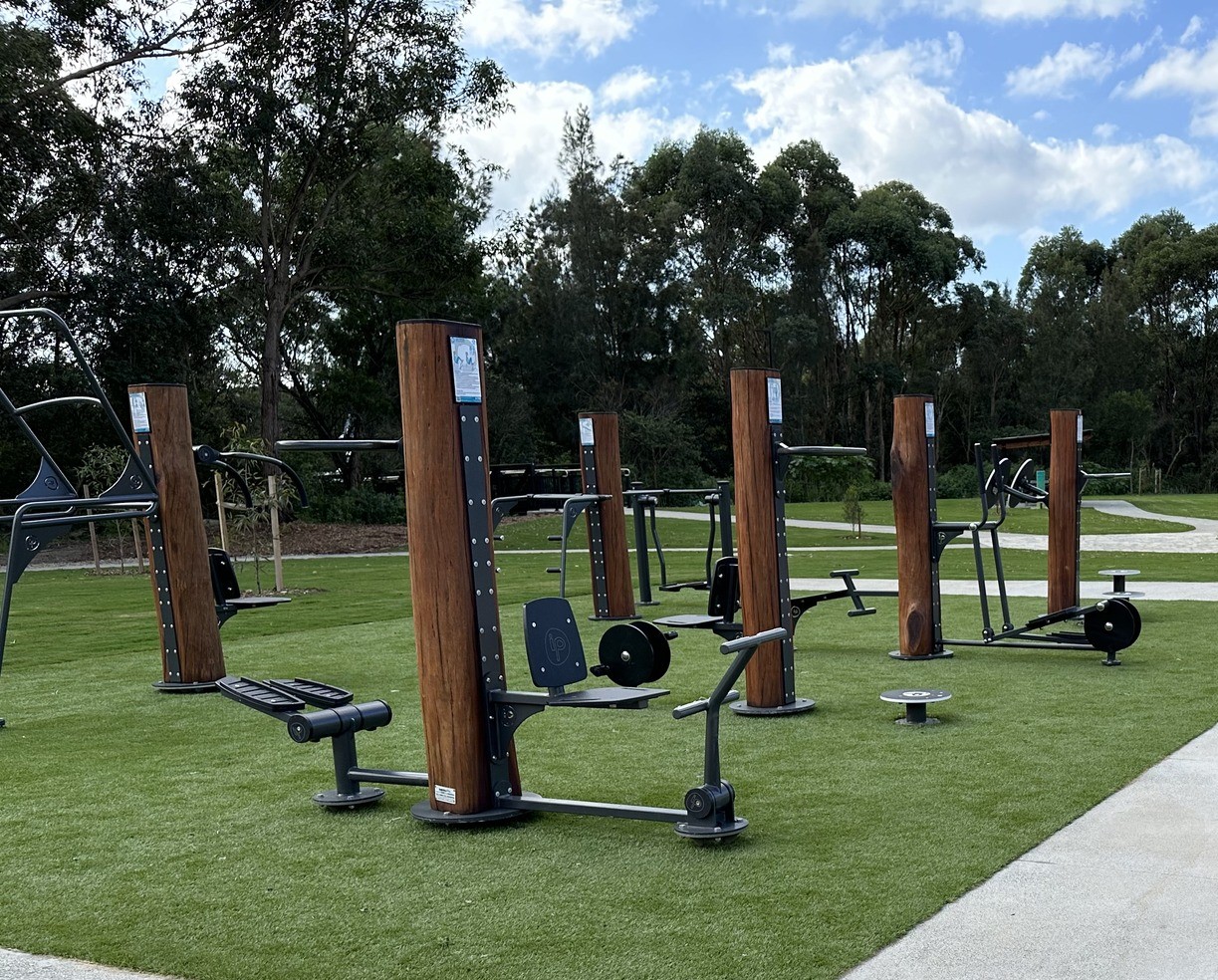
Synthetic turf now installed alongside Fern Creek.
In March 2024 the NSW Government placed the draft Synthetic Turf in Public Open Space Guidelines for Decision-Makers on exhibition from 17 March 2024 until 29 April 2024.
The guidelines aim to help decision-makers, planners and sports field managers who may be considering synthetic turf as an alternative to natural grass. They will also support designers, delivery agents and open space managers to plan and deliver the best outcome for their community.
The final outcomes of this consultation will be documented ahead of the guidelines’ finalisation in 2024.
The draft states, re: Runoff
Another impact of water movement is runoff and the potential for material pollutants to be carried offsite. As some synthetic turf has a loose infill material the design must prevent loose material being carried offsite and into surrounding waterways or stormwater systems. Localised drains and concrete kerbing can minimise runoff to direct water to filtration points/pollutant traps; however, the level of water infiltration will not be as great as natural turf surfaces.
Shoe cleaning devices such as brushes or foot wells can prevent loose material going offsite and ending up in waterways.
Is there existing or proposed stormwater retention or detention through capturing water?
And re: Water and flooding
A thorough understanding of the movement of water across the site and the extent, probability and impact of flood events can ensure a proposal is not be negatively impacted by flood events, nor have an impact on surrounding areas in a flood event.
Is the site flood liable?
In some locations the flood risk will be prohibitive to any development.
Is the site located away from natural waterways or waterbodies?
Is the site suitable for development based on flood advice?
Does the proposal include built solutions to capture and filter runoff?
In March 2016 Pittwater Council announced land at the end of Fern Creek Road in Warriewood Valley is set to become Pittwater’s newest open space area for the community to enjoy, thanks to a land swap agreement between Council and Frasers Property.
Then Mayor Jacqui Townsend said the land swap, which will see the Warriewood Central Local Park (known as Rocket Park) expanded south of Fern Creek, is a “wonderful win for the Pittwater community” and a great example of how Council and business can work together and negotiate in the best interest of the community.
“Once developed, additions at Central Local Park will provide greater recreation opportunities for our growing community,” Cr Townsend said.
'Council intends to mirror features of the northern half of the park in the planned southern area—including a large open grassed area, picnic facilities and barbeques, a public amenities facility and associated car parking.' the media release stated.
“We will be able to deliver a park of approximately 9,900 square metres, plus the creek line corridor, which is some 600 square metres larger than could be achieved on the current lot.
“A pedestrian/cyclist bridge will also be built to connect the existing park at the northern end (Rocket Park) with the new park at the south,” she said.
The agreement was reached following extensive community consultation with the adjoining landowners and the Warriewood Residents Association (WRA).
“We will continue to consult the community and will work together to finalise the design of the southern portion of the park,” she added.
The arrangement saw Frasers Property (and the land previously owned by Australand) swap the northern portions of its three Fern Creek Road properties for the southern portion of the neighbouring property currently owned by Council, plus provide funds to council for infrastructure in Warriewood Valley.
Frasers also funded the extension of Fern Creek Road and the construction of a new east-west road connecting Fern Creek Road with the eastern half of Sector 9, and the section of stormwater infrastructure within the Fern Creek Road extension. Concept masterplan for the planned new park were attached.
The Warriewood Residents Association (WRA) pointed out at that time that there is already a requirement for the first 25 m from the creek line to be dedicated to Council as creekline corridor, and to be to be a vegetated riparian zone, and up to 50m from the creek cannot be built on.
Council currently have a North Narrabeen Reserve (including Rat Park) Draft Plan of Management up for feedback which includes a proposal to install a synthetic surface on Field 2.
North Narrabeen Reserve is also part of the Warriewood/Narrabeen floodplain and catchment. These fields were also covered in water during the April 2024 rainstorms which drain into the Narrabeen Lagoon.
Council's webpage for the North Narrabeen Reserve (including Rat Park) Draft Plan of Management consultation states the 'Enabling [of] an all-weather synthetic surface on Field 2 would be subject to appropriate environmental investigations and the release of the Department of Planning, Housing and Infrastructure’s guidelines for synthetic sportsfield planning' and 'any proposed works are dependent on the allocation of funding'.
Feedback on the Draft PoM for North Narrabeen Reserve is welcomed until Sunday June 23 2024.
- Impose a 5-year moratorium on new planning and approvals for synthetic grass fields.
- Subject existing fields to pollution mitigation measures as soon as possible.
- Urgently develop end-of-life pathways (recycling?) for fields that will not cause damage (their case study identifies the only one in Australia, which is 10 years old and with Australian conditions mean they have shorter lifespans than overseas cases).
- Invest substantial effort into how to improve drainage and condition of natural grass fields to avoid synthetic grass.
- Continue a research program including epidemiological or health risk studies, heat impacts, environmental impacts, chemical composition, stormwater discharge, microplastic loss etc.
Julia Walsh first brought the fragmentation of one of these local fields to the attention of local media in August 2021. Julia then sent in a video update on one of the grassed areas for which synthetic fields is proposed, alongside Manly Creek, taken after then recent rains.
Melwood Oval at Forestville has had a synthetic field installed and during heavy rains Julia witnessed "pulverised rubber" washing off and down pathways.
"It's not just the plastics that you can see, it's the plastics you can't see," Julia stated in 2021.
"The biggest concern is that we're putting these fields in water catchment zones."
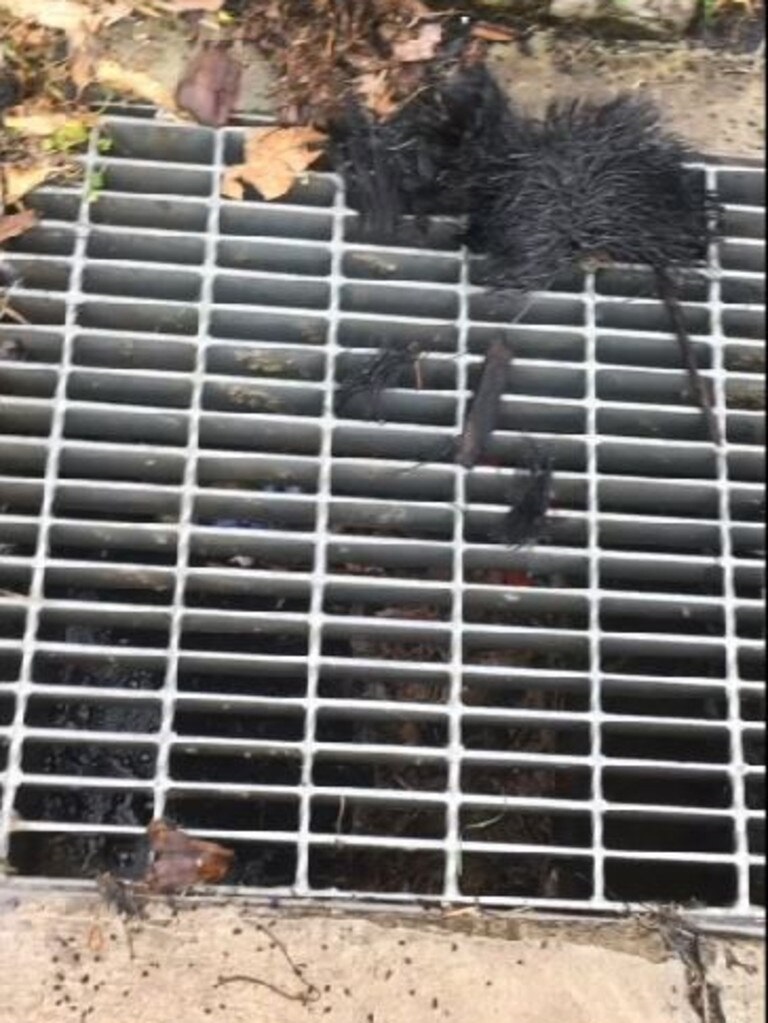
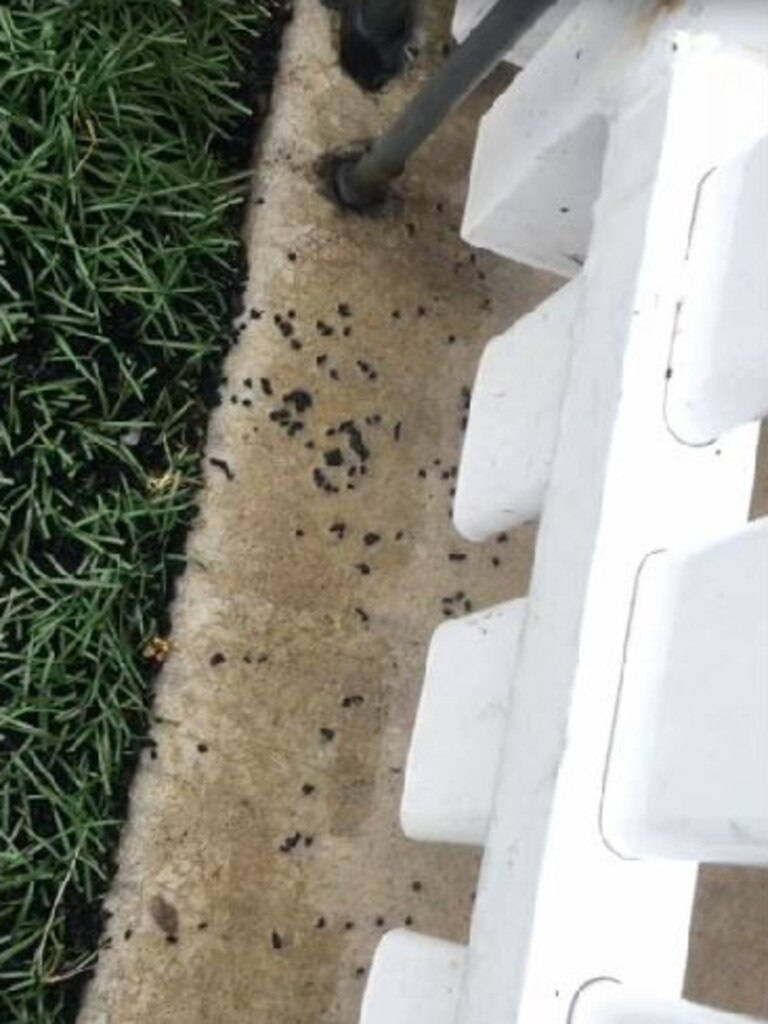
Melwood Oval - synthetic field fragmenting. Images: supplied.
Millers Reserve at Manly Vale is among seven greenspaces across the LGA that will be "upgraded" to a synthetic surface, with a $203,000 tender already awarded for the works. Millers Reserve is located beside Manly Creek, which flows to Manly Dam, and Ms Walsh is concerned about run-off there.
At their March 2021 council meeting, councillors Stuart Sprott and Roslyn Harrison called for council to halt approvals of synthetic fields pending a NSW Government investigation into sustainable alternatives, which was called for by Planning Minister Rob Stokes. Their response was not supported by other councillors.
Seven new synthetic ovals are planned for our area, including one being touted for Careel Bay, which floods during rain events with refuse carried into the wetlands alongside these. Careel Bay is a Wildlife Preservation Area (WPA) due to its importance to resident wildlife as well as migratory birds, many of which are endangered species.
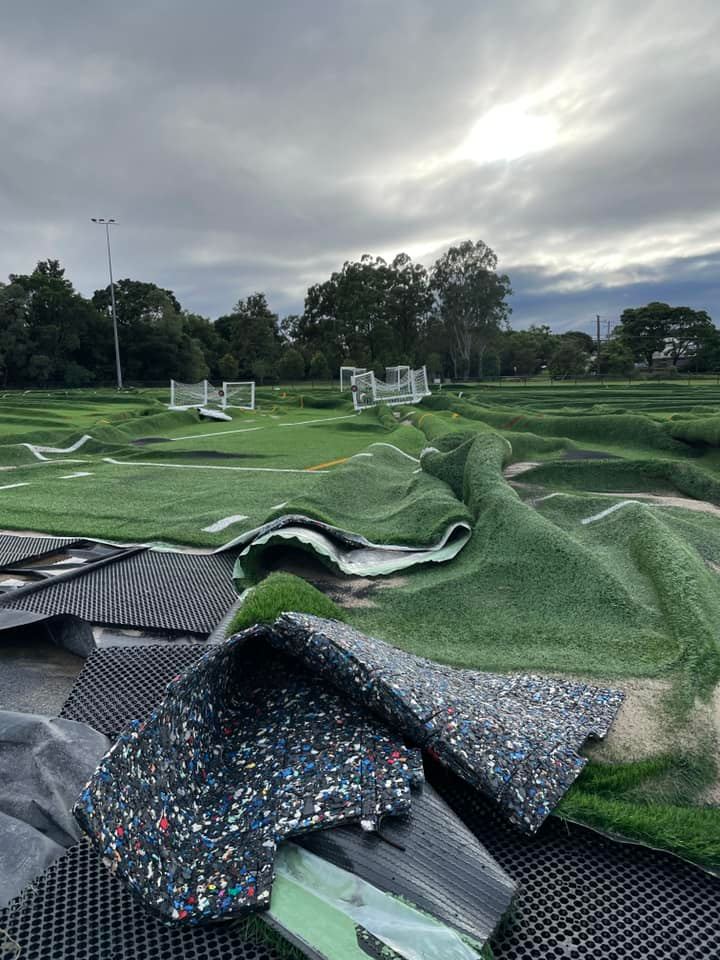
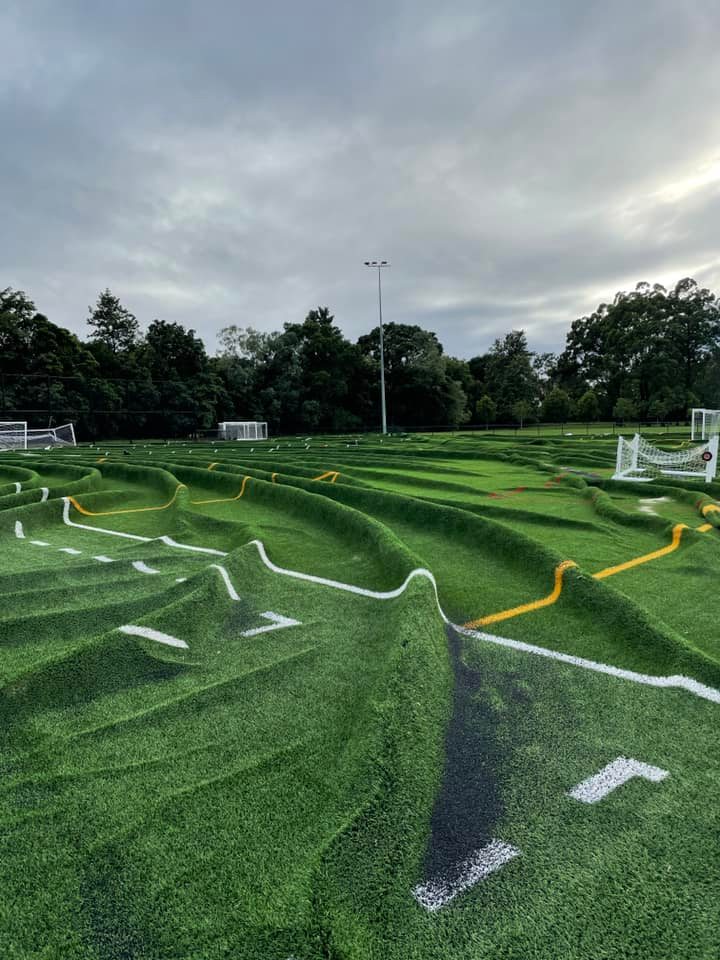
Mitchelton football field No 2 in Everton Park Brisbane after rains there - February 28, 2022. The rest of their fields are grassed areas and these were quickly restored/cleaned to allow commencement of their Season in March. From the Mitchelton football Club Facebook page.
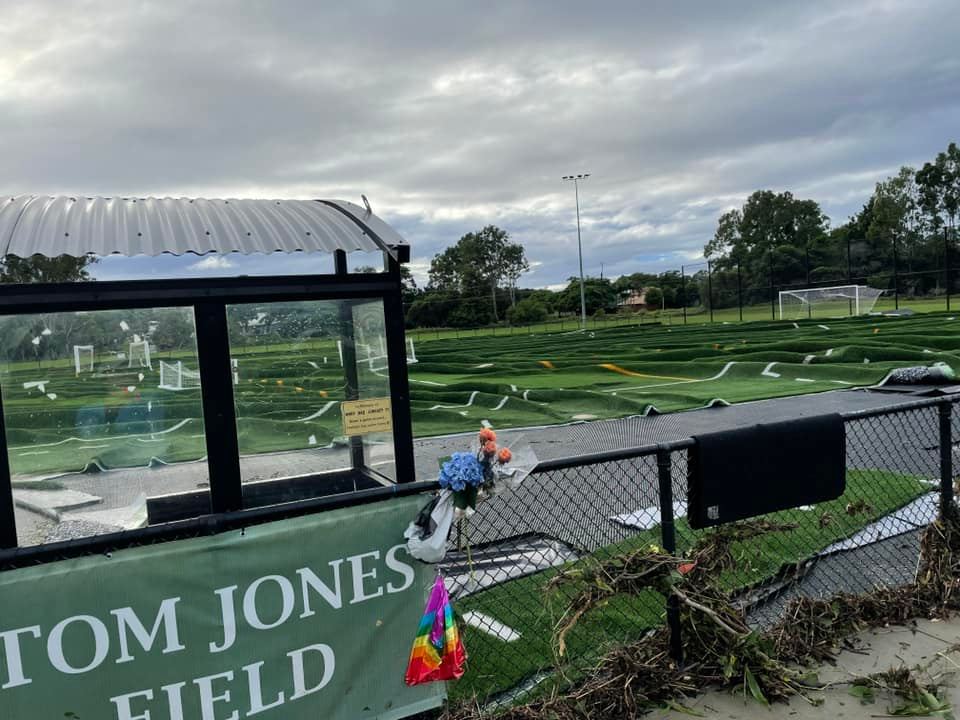
Mitchelton football field No 2 in Brisbane after rains there - February 28, 2022. From the Mitchelton football Club Facebook page.
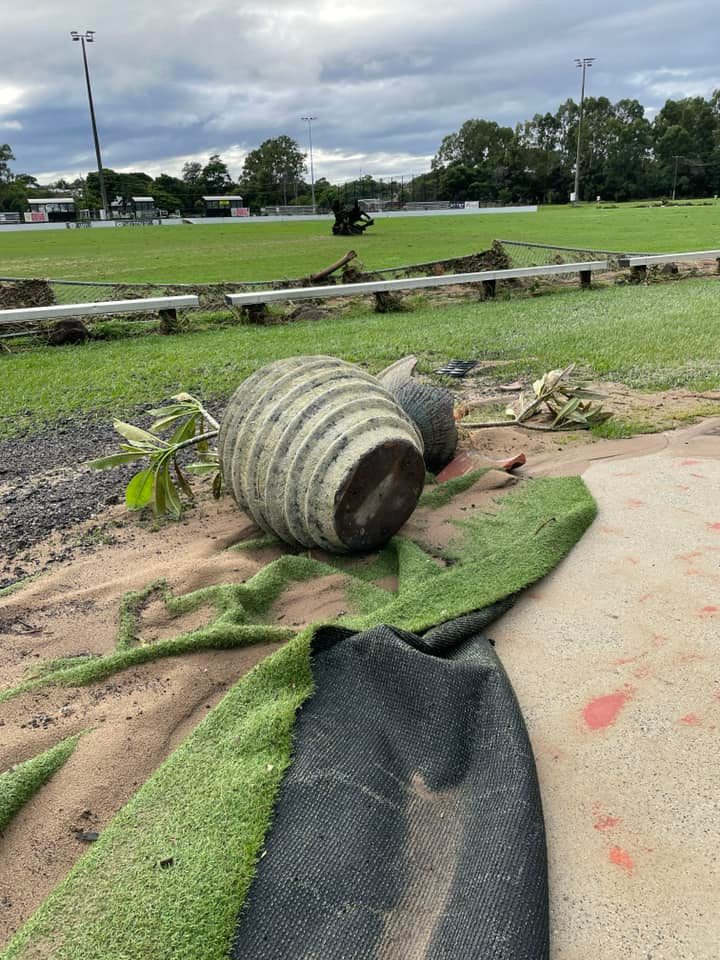
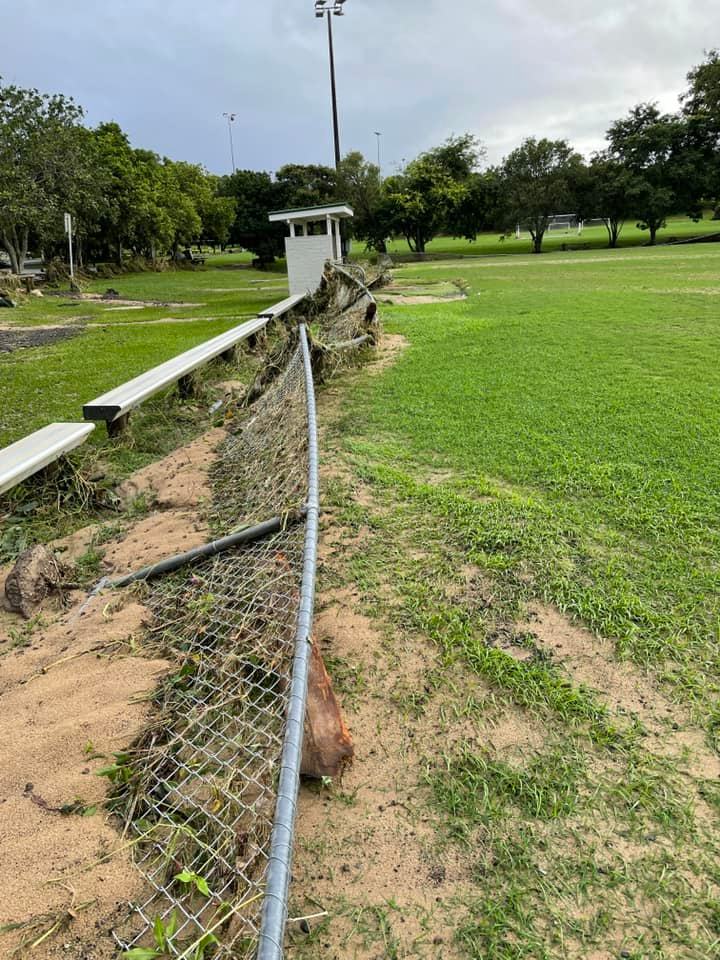
Mitchelton football club - Fields 1, 3-4 in Brisbane after rains there, and perimiters - February 28, 2022. From the Mitchelton football Club Facebook page.
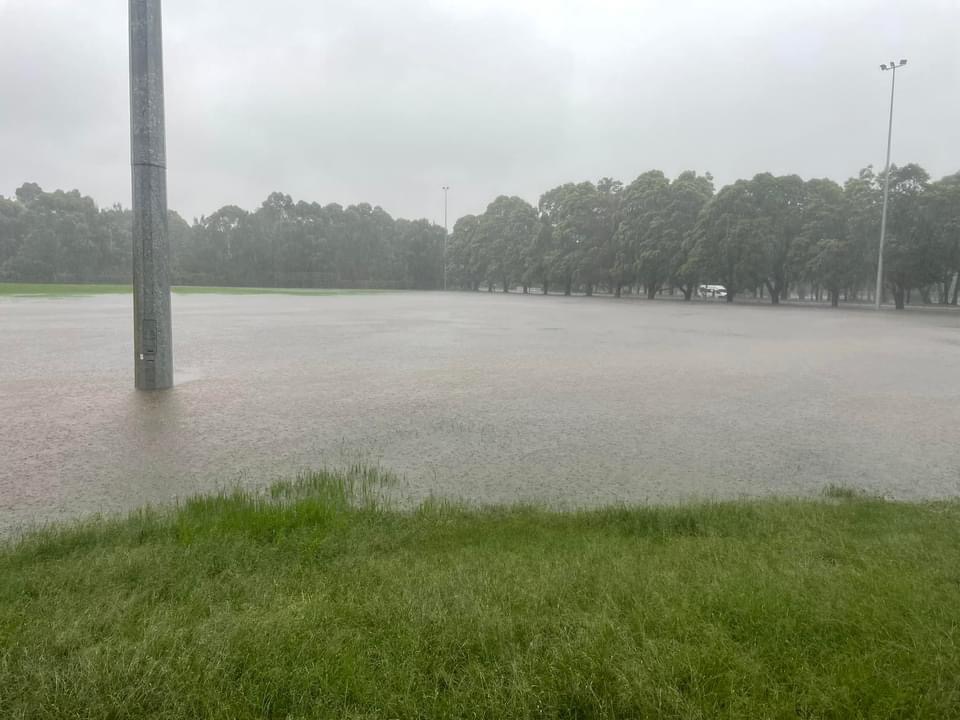
Millers Reserve submerged by water after the heavy rains, March 2022
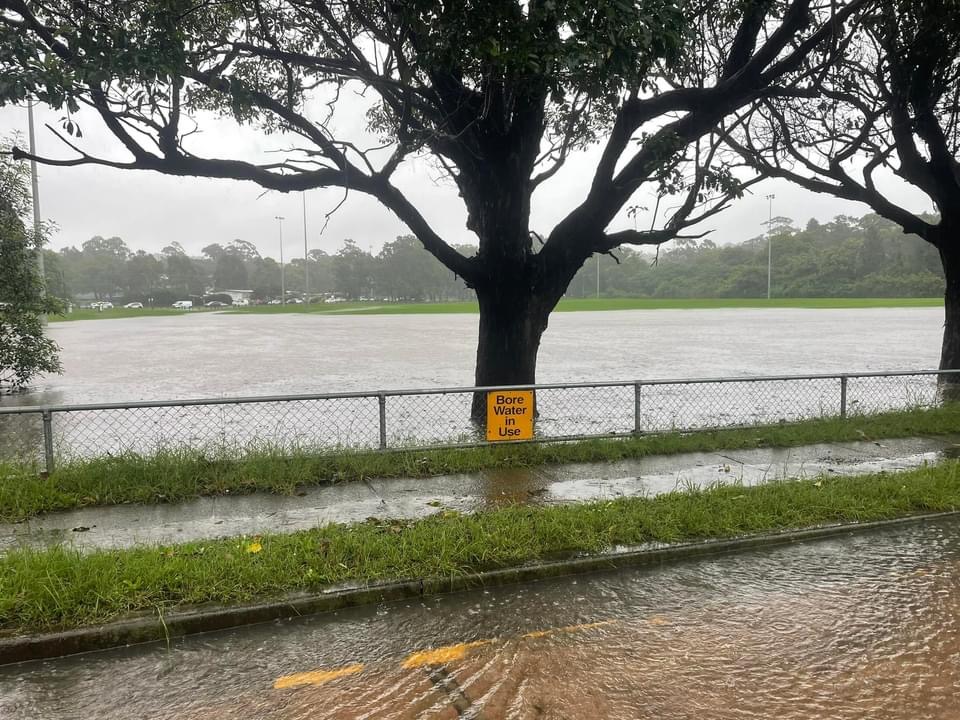
Millers Reserve submerged by water after the heavy rains, March 2022
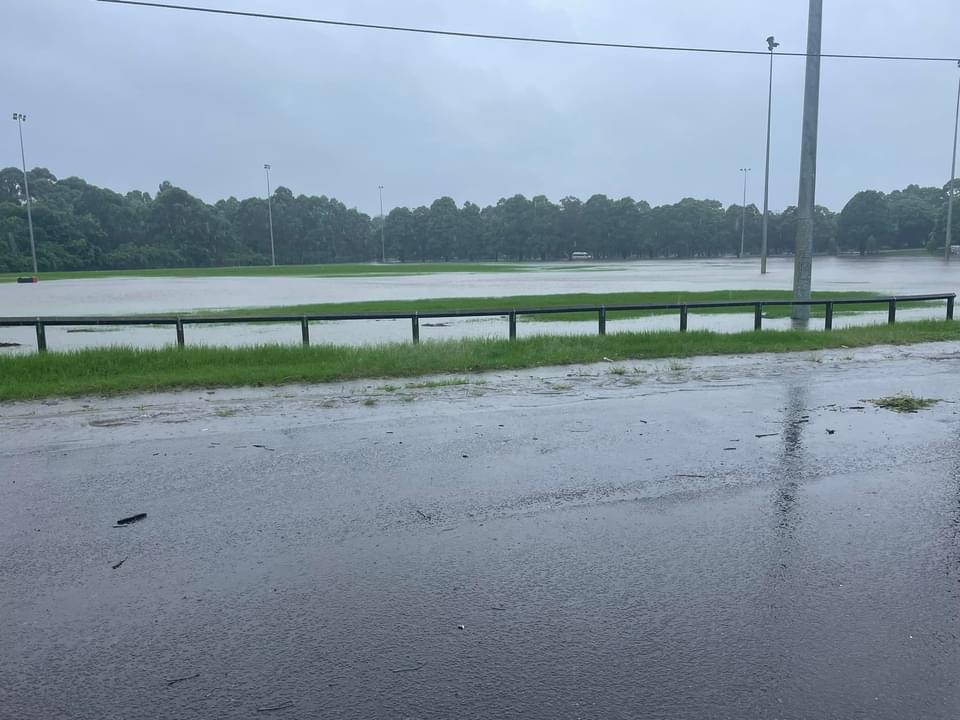
Millers Reserve submerged by water after the heavy rains, March 2022
Julia's video from 2022:
Rubber softfall installed by May 2021 at Newport Beach as part of the Outdoor Youth Space under gym equipment was deteriorating by November 2022 - introducing this material into the beach and Bert Payne Park reserve area.
However, with higher density set to increase, all councils are seeking ways to increase park and sports areas to meet that demand in a way that will work year round - the impacts of constant use on sportsfields, particularly for popular sports such as soccer, has seen the installation of synthetic fields across Sydney.
In May 2022 Council announced the re-opening of Cromer Park’s field 1 this week at a cost of 1.3 million dollars. Cork has been used for the infill, instead of rubber, to reduce the urban heat island effect and provide cooler conditions for players on hot days. There is an additional pump to recycle water draining from the field and boot scrapers at every entrance to mitigate the infill from leaving the ground.
Despite growing opposition to the installation of synthetic turf due to its environmental and health impacts, the loss of natural areas that provide foraging areas for wildlife and space for soil organisms, and the short life span of the product which requires its replacement and the disposal of those old inorganic materials, councils are pushing ahead with installation of the fake over the real.
Would Lynne be happy with the installation of synthetic turf in a park named after her?
Her decades spent working to save Warriewood's natural environment, along with completing a Horticulture course and having a passion for local flora, and the growing body of evidence that points to synthetic turf leading to the degradation and deterioration of natural areas, especially when sited alongside creeks and as part of catchment areas known to flood, would provide that answer.
- Sydney Academy Of Sport Athletic Track Problems Persist: Concerns Rubberised Materials - Pollutants Leaching Into Narrabeen Lagoon - March 2024
- Council Announces Its Proposal To Install Synthetic Field At North Narrabeen Reserve - Draft Will Be Open For Feedback After Autumn School Holidays: State Government Seeking Feedback On Draft 'Guidelines' For Synthetic Turf In Public Spaces Seen As 'Cop Out' - March 2024
- Fern Creek, Warriewood Wetlands Spring 2023 - Arum Lily +Crofton Weed + Fireweed Invasive Weeds Present - All Of Which Can Kill Horses- Your Local Warriewood Bushcare Groups You Can Join This Spring - October 2023
- Warriewood wetlands choked with weeds: Residents call for Action - July 2023
- Warriewood Wetlands - Creeks Deteriorating: How To Report Construction Site Breaches, Weed Infestations + The Long Campaign To Save The Warriewood Wetlands & Ingleside Escarpment - March 2023
- Newly Installed Synthetic 'Soft' Pad At Newport Beach Outdoor Youth Space Already Deteriorating: The Holes In Choosing A Poison Over The Natural More Apparent In 2023 - January 2023
- Lynne Czinner Park At Warriewood; Design And Management Of Park Feedback Sought + Concept For Belrose Bike Park - October 2021
- The Fern Creek - Ingleside Escarpment To Warriewood Walk + Some History + The Local Government Act Sections and POM That Protect This Place - August 2021
- A History Of The Campaign For Preservation Of The Warriewood Escarpment By Angus Gordon and David Palmer - 2019
Drainage Upgrade At Garden Street Warriewood: January 2023
- renewing the headwall and wingwalls
- upgrading the existing undersized apron and scour protection
- upsizing the existing stormwater pipe connection to the southern wingwall
- installing new pedestrian fence.
